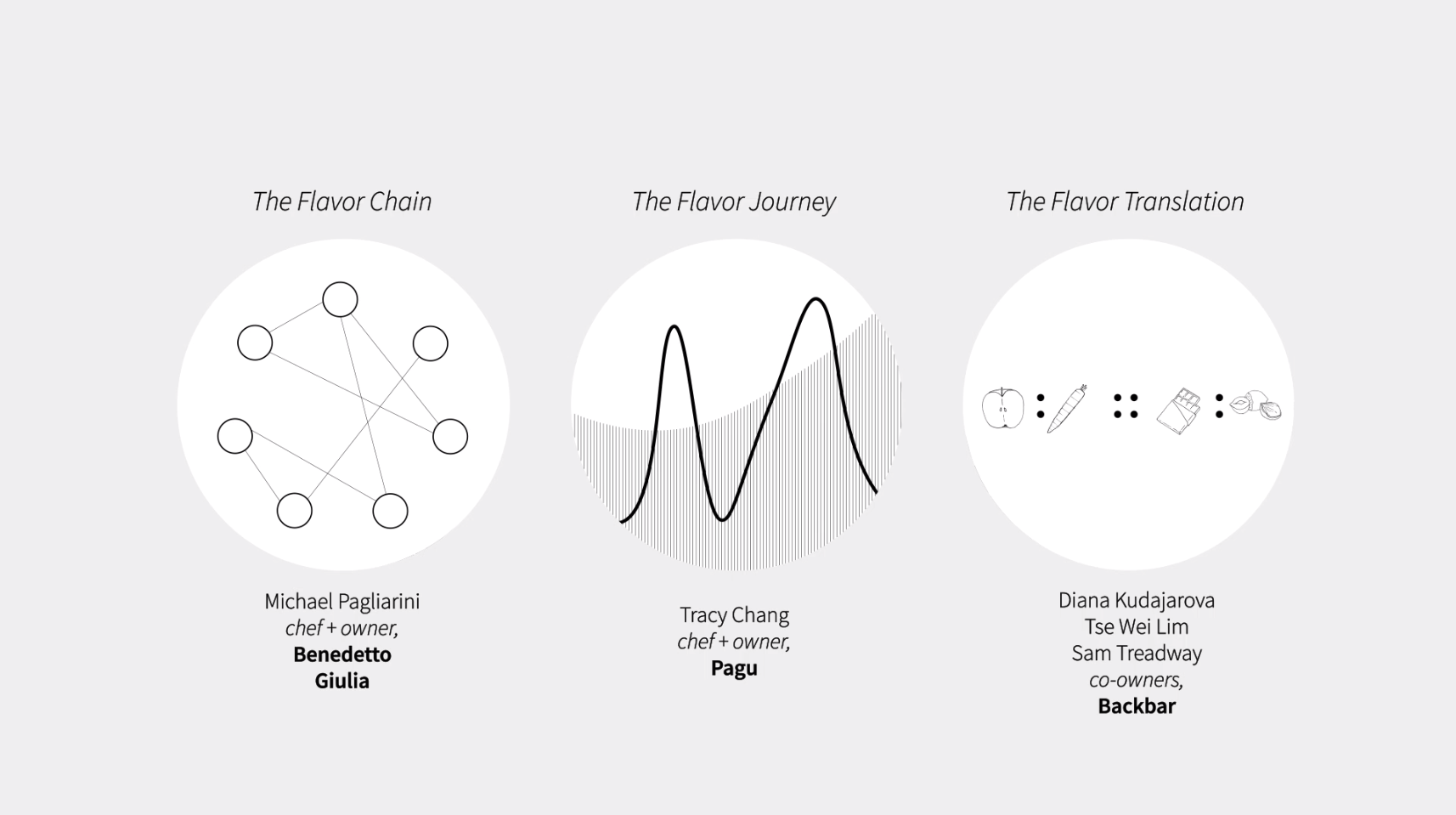How Chefs Become Fluent in Flavor
Flavor Fluency: Original Film Series
Focus: Research on how chefs become fluent in flavor
Why it is interesting: Most people only ever learn to copy a recipe, if they learn to cook at all. But chefs somehow teach themselves to understand flavor, to prototype flavor combinations, and to invent recipes with it. It is not well-known how they learn to do this, as there is no standard way to learn flavor fluency.
Project it is part of: This is part of a larger inititaive to understand our felt sense of taste and how to design for it.
Role: Concept, Art Director, Producer
Funding: Harvard University Office of the Provost
Recognition: Premiered at the Cambridge Science Festival
2017
Project Website


SYNOPSIS
FLAVOR FLUENCY is a series of videos featuring celebrated chefs in the Boston area. We are exploring what it means to develop ‘fluency’ in understanding flavor and designing with it.
Try this as a thought experiment – think of a picture you like. Why do you like it so much? For art, you might recall colors, textures, brush strokes, styles, and be able to describe how you think these work together, and perhaps how they’re enhanced by details of the artist’s biography. Now try this for a burrito. What makes one bean burrito demonstrably better than another? If you’re like me, you know when you ‘like’ or ‘dislike’ a flavor, but despite decades of experience multiple times a day with countless flavors, you lack the ability to describe why you like or dislike them in any meaningful way. It goes on. How does an apple differ in taste from a pear? How about one pear from another? Or red wine vinegar from apple cider vinegar? Or malt vinegar? Our attempts to explain the flavor differences default to visual descriptions and otherwise remain vague.
In the domain of flavor, most of us lack the knowledge to structure our experience in useful ways for ourselves to know and design for our own tastes, much less to describe our experience in meaningful ways to others. Without this basic understanding, we don’t learn to notice the nuances that influence preferences or learn to become active creators of new experiences. Despite the interest and joy we get from flavor, most of us are, literally, just winging it. We add peas to a recipe we found online and maybe it is better and maybe it isn’t. We put things together based on intuition and traditions. We can copy chef recipes but we’re not actually ‘literate’ in flavor. We have no idea why our experiments succeed or fail because we don’t actually know what we’re doing.
We are not like chefs, sommeliers, brewers, farmers, cheesemongers, and other flavor nerds who have spent decades developing their own methods for deeply understanding what flavors should taste like. Each learns this in their specific niche. A farmer may know the nuances of corn and beef flavors inside out, but would need at least another decade to master wine flavors. These professionals often learned as apprentices or were self-taught. The learned to ‘design’ and ‘compose’ desirable flavors within their specialty.
Scientists are increasingly learning how people develop flavor literacy. Hopefully, one day, we can make it easier for you and me to become more fluent in flavor. In this series, we’re simply looking at how four professionals use different approaches to ‘think in flavor’. We’ll meet each of them one dish at a time….